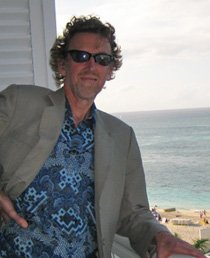
Laurence A. Nafie
- Chemistry
Research Interests
Physical; analytical; theoretical; biophysical
Education
- B. Chem., 1967, University of Minnesota
- Ph.D., 1973, University of Oregon
- Postdoctoral Associate, 1973-1975, University of Southern California
Honors & Awards:
- Alfred P. Sloan Foundation Fellow, 1978
- Coblentz Awards, 1981
- Bomem Michelson Award, 2001
- Meggars Award, 2001
- Distinguished Service Award of the Society for Applied Spectroscopy, 2007
- Fellow of the Society of Applied Spectroscopy, 2008
- Pittsburgh Spectroscopy Award, 2013
- Gold Medal Award of the New York Section of the Society for Applied Spectroscopy, 2014
- Chirality Medal Winner, awarded by the Societa Chimica Italiana, 2019
Research Focus
The research interests of Professor Nafie are focused on the development and application of vibrational optical activity (VOA). VOA is composed of two areas, vibrational circular dichroism (VCD) and Raman optical activity (ROA). VCD is the difference in the infrared (IR) absorbance of a chiral molecule for left versus right circularly polarized radiation. ROA is the corresponding difference for Raman scattering. VCD spectra are measured with Fourier transform (FT-IR) instruments by a method first developed in our laboratory in 1979. Commercial FT-VCD instruments, based on this design, became available in 1997 and are now used world-wide in both academic and pharmaceutical research laboratories. In 2003, instrumentation for ROA measurements first became commercially available. Our laboratory has a close association with BioTools Inc., a company co-founded by Professor Nafie specializing in instrumentation for VOA. VOA spectra can be calculated accurately using quantum chemistry programs that are now available from Gaussian Inc.

One area of research in our group is to use VCD to determine the absolute configuration and solution-state conformation of new chiral molecules by comparison of observed and calculated VCD spectra, as shown in the figure for a functionalized diketone. Another is to understand the origin of VCD enhanced by low-lying excited electronic states of certain transition metal complexes and metalloproteins. We also use both VCD and ROA to study the conformations of biological molecules such as peptides, proteins, nucleic acids, and carbohydrates. Another area of interest is VCD spectra of solid phase samples, particularly therapeutic protein pharmaceuticals, in forms such as KBr pellets, mulls, evaporated films and spray-dried films. In spray-dry films, we often see VCD enhancements of several orders of magnitude over other sampling methods. We are interested in extending VCD and ROA into new areas such as near-IR VCD of overtones and combination bands, near-IR excited ROA, and surface-enhanced ROA and VCD. When molecules adsorb to nano-fabricated structures on surfaces, enhancement factors of up to fourteen orders of magnitude occur in hot spots of very high surface plasmon fields, making possible single molecule detection. Observing surface enhanced VOA would add an additional level of chiral sensitivity to this already very sensitive method of molecular analysis.
Selected Publications
- Vibrational Optical Activity: Principles and Applications by Laurence A. Nafie, John Wiley & Sons, Ltd., Chichester, (2011). http://www.wiley.com/WileyCDA/WileyTitle/productCd-0470032480.html
- “Determination of Absolute Configuration of Chiral Molecules Using Vibrational Optical Activity: A Review” (Focal Point Review) by Yanan He, Bo Wang, Rina K. Dukor and Laurence A. Nafie, Appl. Spectrosc.65, 699-723 (2011).
- “Simultaneous Acquisition of All Four Forms of Circular Polarization Raman Optical Activity: Results for α-Pinene and Lysozyme” by Honggang Li and Laurence A. Nafie , J. Raman Spectrosc.43, 89-94 (2012).
- “Handedness Detected by Microwaves” by Laurence A. Nafie, Nature, 297, 446-448 (2013).
- “Is Supramolecular Chirality the Underlying Cause of Major Morphology Differences in Amyloid Fibrils” by Dmitry Kurouski, Xuefang Lu, Ludmila Popova, William Wan, Maruda Shanmugasundaram, Gerald Stubbs, Rina K. Dukor,Igor K. Lednev and Laurence A. Nafie, J. Am. Chem. Soc.136, 2302-2312 (2014).
- “Amplified Vibrational Circular Dichroism as a Probe of Local Biomolecular Structure” by Sérgio R. Domingos, Adriana Huerta-Viga, Lambert Baij, Saeed Amirjalayer, Dorien A. E. Dunnebier, Annemarie J. C. Walters, Markus Finger, Laurence A. Nafie, Bas de Bruin, Wybren Jan Buma, and Sander Woutersen, J. Am. Chem. Soc.136, 3530-3535 (2014
- “Vibrational Optical Activity: From Small Chiral Molecules to Protein Pharmaceuticals and Beyond” by Laurence A. Nafie, in Frontiers and Advances in Molecular Spectroscopy, Edited by Jaan Laane, Elsevier, New York, pp. 421-469 (2018).
- “Vibrational Optical Activity in Chiral Analysis” by Laurence A. Nafie and Rina K. Dukor, in Chiral Analysis, Second Edition, Prasad L. Polavarapu, Ed., Elsevier, Amsterdam, pp. 201-247, (2018).
